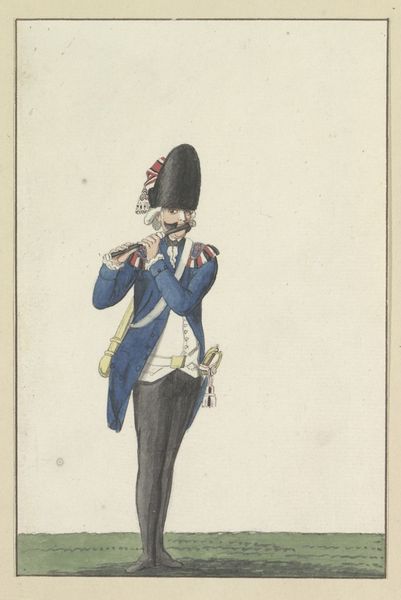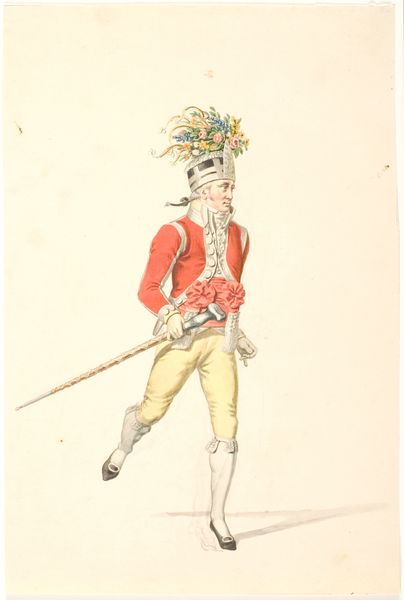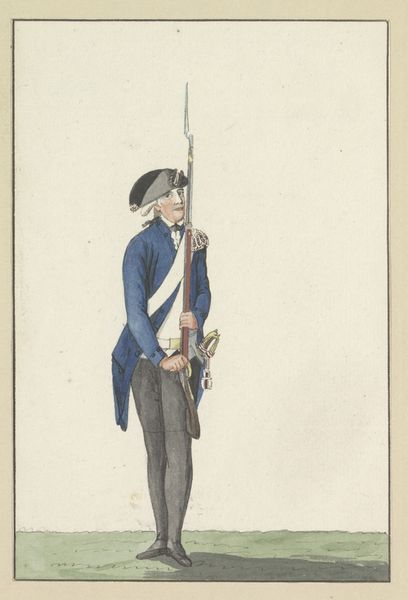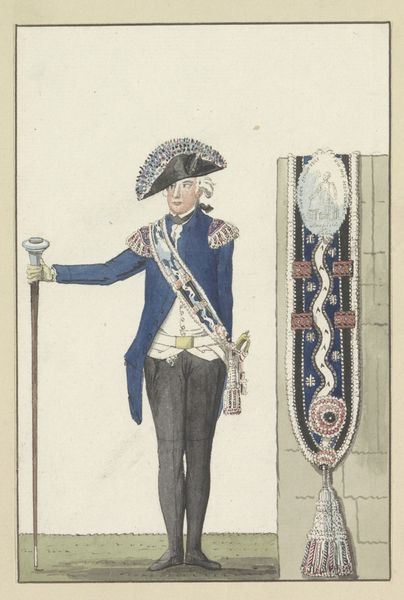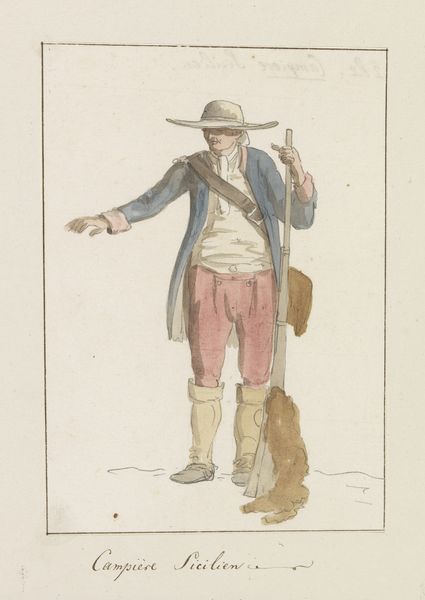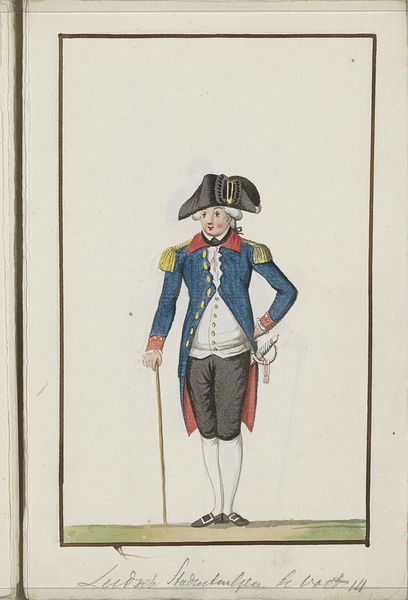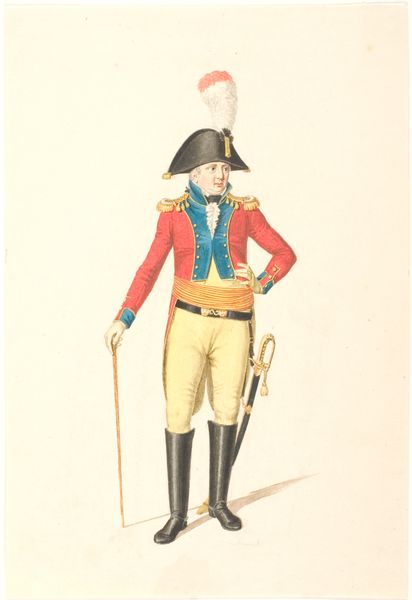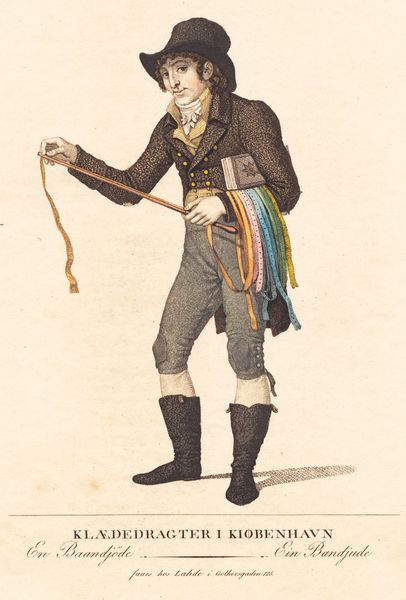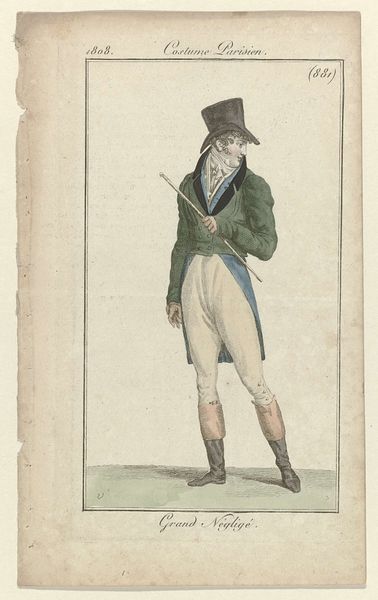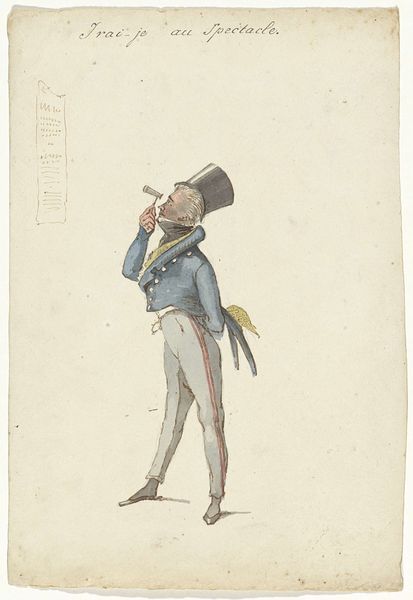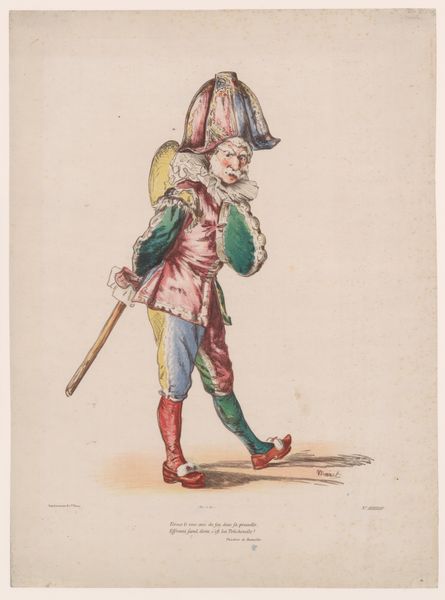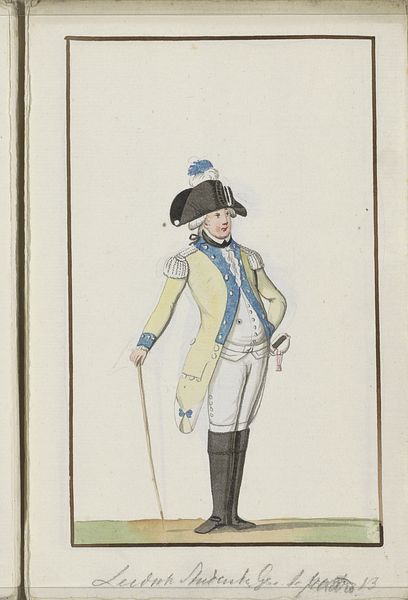
drawing
#
portrait
#
drawing
#
neoclacissism
#
caricature
#
traditional media
#
caricature
#
genre-painting
Dimensions: height 207 mm, width 137 mm
Copyright: Rijks Museum: Open Domain
Editor: Here we have "Tamboer van het Genootschap tot Nut der Schutterij te Amsterdam, 1787", a drawing from 1787, by an anonymous artist. It’s striking how the almost cartoonish quality of the figure clashes with the serious demeanor. How do we interpret this work through its historical context? Curator: Good observation! Looking at this through a socio-political lens, the Schutterij were essentially citizen militias. Consider the date, 1787, a period of political tension in the Netherlands. The Patriot movement, advocating for more democratic governance, was clashing with the Stadtholder’s forces. This drummer, therefore, becomes an image embroiled in that power struggle. Does viewing him this way alter your understanding? Editor: Absolutely! The exaggerated features, like the drum seeming too big for the figure, might be a subtle critique or caricature of the militia’s competence or social standing. Was art often used to make political statements during this era? Curator: Indeed. Caricature was a potent weapon, especially with the rise of print culture. Images could circulate quickly and sway public opinion. This image walks a fine line, doesn't it? The attire is somewhat formal, representative of the Schutterij as an institution, while the drawing style seems intended to create an emotional reaction, thus taking it out of purely the genre painting of depicting social gatherings. What about the setting, or rather, lack thereof? Editor: The blank background makes the figure almost isolated, further emphasizing the individual and potentially highlighting a vulnerability or lack of support for the Schutterij? Curator: Precisely. And that starkness also places the *viewer* more directly in relation to the figure, prompting a more direct and perhaps challenging encounter. Food for thought! Editor: Definitely. Seeing this drawing as a form of political commentary really changes how I understand its purpose and impact. Thanks for pointing out those contextual layers! Curator: My pleasure. I find exploring those socio-political influences provides greater clarity and nuance.
Comments
No comments
Be the first to comment and join the conversation on the ultimate creative platform.

